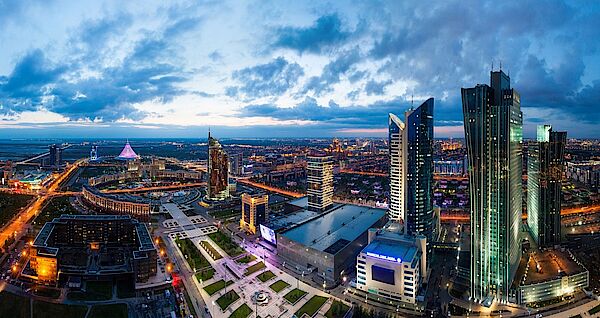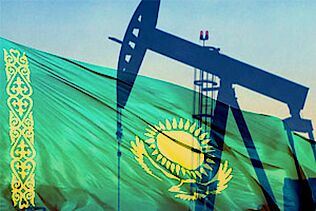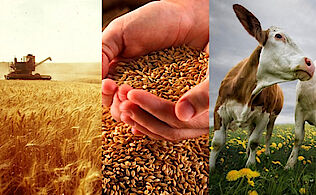The Republic of Kazakhstan
Kazakhstan is located in the heart of the Eurasian continent. Its territory occupies 2, 724, 900 square kilometers (1,049,150 square miles). It is the CIS’ second and world’s ninth largest country. The Kazakhstan territory is larger than the twelve countries of the European Union! Kazakhstan borders with China, Kyrgyzstan, Turkmenistan, Uzbekistan and Russia.

The Republic of Kazakhstan is a unitary state with a presidential form of government. According to the Constitution, the state proclaims itself a democratic, secular, legal and social state whose highest values are an individual, his life, rights and freedoms. Kazakhstan gained independence on December 16, 1991. The capital is the city of Astana. The state language is Kazakh. The Russian language has the status of a language of interethnic communication. Monetary unit - tenge.
By its administrative-territorial structure the country is divided into 14 regions and 3 cities of republican significance:
• Astana - the city of republican significance – the capital of Kazakhstan
• Almaty - the city of republican significance
• Shymkent - the city of republican significance
• Akmola region
• Aktobe region
• Almaty region
• Atyrau region
• East Kazakhstan region
• Zhambyl region
• West Kazakhstan region
• Karagandy region
• Kostanay region
• Kyzylorda region
• Mangystau region
• Pavlodar region
• North Kazakhstan region
• Turkestan region
The population of Kazakhstan as of April, 2018 was 18 million 212 thousand 800 people. According to the national census the ethnic structure of the Kazakhstan society by 2018 looks as follows:
• Kazakhs - 67,47%
• Russians - 19,76%
• Uzbeks - 3,18%
• Ukrainians - 1,53%
• Uygurs - 1,46%
• Tatars - 1,11%
Kazakhstan is the largest country in the world that has no direct access to the World ocean. Due to the remoteness from oceans the country has an extreme continental climate. The average temperature in January is around −19 °C in the north and −2 °C in the south, the average temperature in July is around +19 °C in the north and +28 °C in the south. Summer is hot and dry, winter is cold and snowy. A large part of the country's territory consists of deserts - 44% and semi-deserts - 14%. Steppes cover 26% of Kazakhstan's territory, forests - 5,5%. There are 8,5 thousand rivers In Kazakhstan. There are 48 000 big and small lakes in Kazakhstan.
Resource of Kazakhstan

Kazakhstan also has considerable reserves of oil and gas, which are concentrated in its western areas. Nowadays the country belongs to the group of the world's leading oil-producing states with volumes amounting to more than 80 million tons of oil and gas condensate a year. According to plans the annual extraction will be increased to 120 million tons by 2020. At present Kazakhstan is in 9th place in the world with regard to confirmed reserves of oil. Besides that, the country is in 8th place by the reserves of coal and 2nd place by the reserves of uranium.
Economy of Kazakhstan

Traditionally great attention in the country is paid to development of the agricultural sector. Kazakhstan is among world's top ten grain exporters and is one of the leaders in flour export. Farming is well-developed in the north - 70% of arable lands are used for growing grain and technical crops - wheat, barley, millet. In the south of the country rice, cotton and tobacco are grown. Kazakhstan is also known for its gardens, vineyards and gourd plantations. Animal husbandry is the leading branch of the agriculture. The key areas of the animal husbandry are sheep breeding, horse breeding, camel breeding, cattle breeding and pig breeding. Poultry farming and fishery are also developed in the country. In the World bank's 2017 “Doing Business" ranking Kazakhstan took 35th place, leaving behind all CIS countries. Kazakhstan's foreign trade turnover in 2016 made up more than 552 billion dollars. The main export goods are produced in the mining, fuel and energy, metallurgical, chemical and grain industries. The country's main trading partners are Russia, China, European countries and the CIS.
Kazakhstan is implementing a large scale project “New Silk Way" which aims to revive the country's historical role as a connecting link in the continent and transform it into a largest business and transit hub of the region, a bridge between Europe and Asia. As a result of implementation of this mega-project by 2020 the volume of cargo traffic passing through the country should increase by nearly 2 times and subsequently make up at least 50 million tons a year. Kazakhstan's touristic cluster also has a significant potential that is capable to convert large landscape riches and the unique cultural-historical heritage of the country into new opportunities for development. Within large scale social modernisation of the country new schools, professional colleges and universities are being constructed, up-to-date medical clinics and hospitals are put into service and the system of social support of the population is being improved.
In July, 2010 the Customs Union of Belarus, Kazakhstan and Russia was launched and since January 1, 2012 the Common Economic Space between these countries has started functioning. The VI Congress of leaders of world and traditional religions will be held in Astana on October 10-11, 2018. The stable growth of all branches of the economy, the international recognition, the political stability serve as a basis for prosperity of the Kazakhstan's society.
Kazakhstan is a country that aspires to the future, honors its cultural traditions and successfully realizes the huge creative potential in the modern highly-competitive world.
Kazakhstan is a country looking to the future, which reveres its cultural traditions and successfully implements a huge creative potential in the modern highly competitive world.





